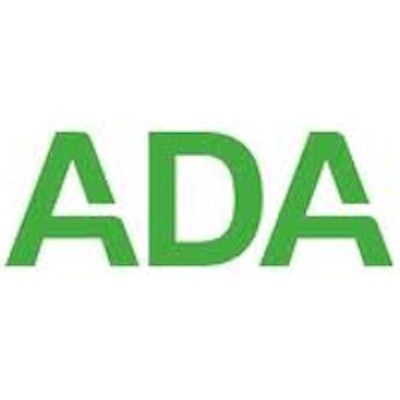
The gap in dental care utilization in the U.S. narrowed between children enrolled in Medicaid and those with private dental benefits from 2005 to 2013, but a large gap remains between adults in those categories, according to a new research brief by the ADA Health Policy Institute.
The authors assessed changes in both Medicaid and private dental plan dental care utilization for children and adults from 2005 to 2013. They found that, while enrollment increased significantly in this time period, Medicaid programs were only able to increase dental care utilization among children.
"Our analysis ... shows convincingly that dental care utilization trends for adults and children continue to diverge," wrote co-authors Marko Vujicic, PhD, and Kamyar Nasseh, PhD.
Utilization rates
The researchers defined utilization as the "percentage of individuals with a dental visit." They obtained Medicare data from 2005 to 2013 from the U.S. Centers for Medicare and Medicaid Services (CMS) 416 form.
The brief, titled "Gap in dental care utilization between Medicaid and privately insured children narrows, remains large for adults," stated that 64% of children with private dental benefits received dental care in 2013, up from 59.8% in 2005. During that same time period, 39 states and the District of Columbia had an increase in dental care utilization among children with private dental benefits.
“The data are clear: more Medicaid children are visiting the dentist.”
For Medicaid-enrolled children, the researchers found that 48.3% received dental care in 2013, up from 35.3% in 2005. They found that 47 of 48 states and the District of Columbia had an increase in dental care utilization among Medicaid-enrolled children during the 2005-2013 time period. Data were not available for two states.
Connecticut had the highest rate of dental care use among Medicaid-enrolled children in 2013 at 64.3%, up from 31.9% in 2005. Ohio had the lowest rate at 24.3% in 2013, down from 36.3% in 2005. Ohio was the only state for which the authors had data in which the gap widened.
Adult rates
Among U.S. adults with private dental benefits, dental care utilization was 59.2% overall in 2013, which was down from 60.2% in 2005. The authors noted that from 2005 to 2013, 21 states and the District of Columbia had an increase in dental care utilization, while 28 states had a decrease.
Oregon had the highest utilization rate among adults with private dental benefits at 69.1% in 2013, up from 61.3% in 2005. Hawaii had the lowest rate, slipping to 41.5% from 46.5% in 2005.
The researchers also found that Alaska, Minnesota, and Nebraska had the smallest gap in dental care utilization between privately and publically insured adults. Alaska had the smallest gap with utilization rates of 52.6% for privately insured adults and 34.8% for Medicaid-enrolled adults. Vermont, New Mexico, and Arkansas had the largest gaps between the two groups. Vermont had the largest gap, with utilization rates of 65.9% for privately insured adults and 13.2% for adults in Medicaid.
Data availability
The authors emphasized that it was not possible to construct "a consistent time series of dental care utilization," because CMS changed its reporting methods beginning in 2010. They interpreted this to mean that some of the change in rates between 2005 and 2013 in the CMS data will be caused by the changes in how Medicaid enrollment is reported in the CMS 416 data.
The authors explained that, before 2010, the rate was based on children ages 0 to 20 who were enrolled in Medicaid at any time during the fiscal year. It was changed in 2010 to be based on children ages 1 to 20 who had at least 90 days of continuous Medicaid enrollment during the fiscal year.
Vujicic and Nasseh also mentioned in the report that data availability was a limiting factor.
"We acknowledge that a major weakness in our analysis is that we focus only on dental care utilization and not, for example, treatment plan completion rates or oral health status. This is simply a reflection of data availability," they wrote.
However, the authors noted that their findings show that while enrollment has increased significantly between 2005 and 2013, "Medicaid programs have only been able to increase dental care utilization among children."
They also emphasized that "the data are clear: more Medicaid children are visiting the dentist."



















